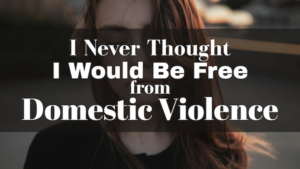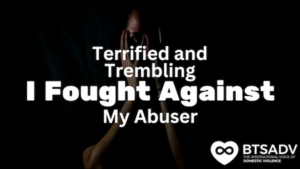According to DomesticShelters.org, approximately half of protective orders (POs) domestic violence survivors obtain against their abusers who physically assaulted are were violated. Two-thirds of the protective orders for victims of rape or stalking are not followed by the abuser.
These statistics, like most about domestic violence, are a little daunting, but by reporting violations, staying aware of your surroundings, and making safe decisions, a protective order can be an excellent tool to help guard yourself against your abuser. Some victims find it empowering to take back some of the control that their abuser had over them. Orders can also send a message to the abuser that you are no longer willing to take the abuse. Not all abusers hear or accept the message, but regardless, violating the order is a crime and all violations should be taken seriously.
It is essential to understand that a protective order is a law, and not just a recommendation. In fact, not even the person protected by the order has permission to change it or allow the abuser to break certain provisions. The order stays in effect until a court changes it. The PO is in place to protect the victim from the abuser, meaning that the victim cannot be arrested or accused of violating the order, even if they were a willing participant in the violation of the order.
The only way a protective order is successful is if the victim reports the violations any time they occur. Reporting a violation can be a confusing and difficult thing to do. Not all violations are intimidating, threatening or physical, and can be concealed with apologies and promises that can pull you right back into the unhealthy cycle of abuse you just escaped from. Some other forms of violations are a little easier to determine. According to 8 Ways You Can Violate a Protective Order, these include;
- Coming too close to the victim,
- Contacting the victim (including text, email, and postal mail),
- Failing to move out of the home shared with the victim,
- Visiting the victim’s workplace or school,
- Failing to pay bills (including utilities, mortgage or child support),
- Failing to comply with child visitation rules,
- Purchasing or possessing a gun,
- Responding to contact attempts from the victim and
- Threatening the victim or their family in person or through social media, email, or text.
A protective order cannot protect you unless it is used and violations are reported. If you let one violation go, the abuser may continue to violate it, thinking that you are not going to hold them to it. This not only defeats the purpose of the order, but it also allows the abuser to regain the control they previously had over you. Documenting all communication and protection order violations is crucial. This can include screenshots of text messages, emails, phone call history, security camera tapes, or witnesses of the violation.
A protective order is ineffective if people are not aware of it. To enforce a protective order, it must be shared and readily available to those it impacts. The local police will be able to look up the case number in their database and pull up the order quickly, but it is imperative that you keep a copy with you and provide one to others who may come in contact with your abuser. This means providing a copy to your children’s school, workplace, relatives, and alerting neighbors who live nearby. The more people who know, the more likely a violation will be reported, and the safer you will be
When a protective order is violated, the consequences vary from state to state and with the nature of the violation. According to DomesticShelters.org typically a violation of the order (whether civil or criminal) is an arrestable offense. In general a violation of PO results in a misdemeanor; however, the charges stack up, so if the abuser violates the order a certain amount of times, the charge will be upgraded to a felony. If they continue to break it, it can eventually become a stalking charge.
The first thing to do when an order is violated is contact the police. Make sure to have any evidence, documentation and the protective order available in case they request it. Do not engage in conversation or agree to meet with your abuser. It is essential to be aware of your safety. If your abuser is arrested, you may want to be more alert in case they retaliate. Sometimes an abuser isn’t arrested right away, meaning that your safety could be at risk during that time. Having a safety plan, making arrangements ahead of time, and keeping those close to you and in your neighborhood up to date on the situation will help keep you safe when a violation occurs.
Each protective order is different in the amount of time that it is active. It is imperative to know when your order expires so you can take the proper precautions or make plans to renew it. Each order has a date of expiration and if there is not one, it likely expires two years from the time it was granted. If you do not request an extension before the expiration date, all child visitation, child support, and provisions that were stated in the protective order will expire. You can file for an extension of the order if your abuser has violated the order, you have upcoming trials that could put you in harm, or you have reason and proof to believe that you and your children are still not safe from your abuser. It is best to file for an extension at least 30 days before the order expires so there is no lapse in protection.
Protective orders are not magical. They do not come with a promise of protection or a guarantee that your abuser will follow it. Protective orders are only one of the many small parts required to keep you safe after leaving your abuser. It is to be used in conjunction with an awareness of your surroundings, knowledge of the order and its specific violations, and making your protection order known by those around you. It requires that you, the survivor report each violation, regardless if it is big or small. A protective order can be one of the first steps at taking the control back and breaking your silence.
If you or someone you know is in an abusive relationship, there is help. You can visit the Break the Silence website at www.breakthesilencedv.org or chat with one of our helpline advocates at 855-287-1777.










